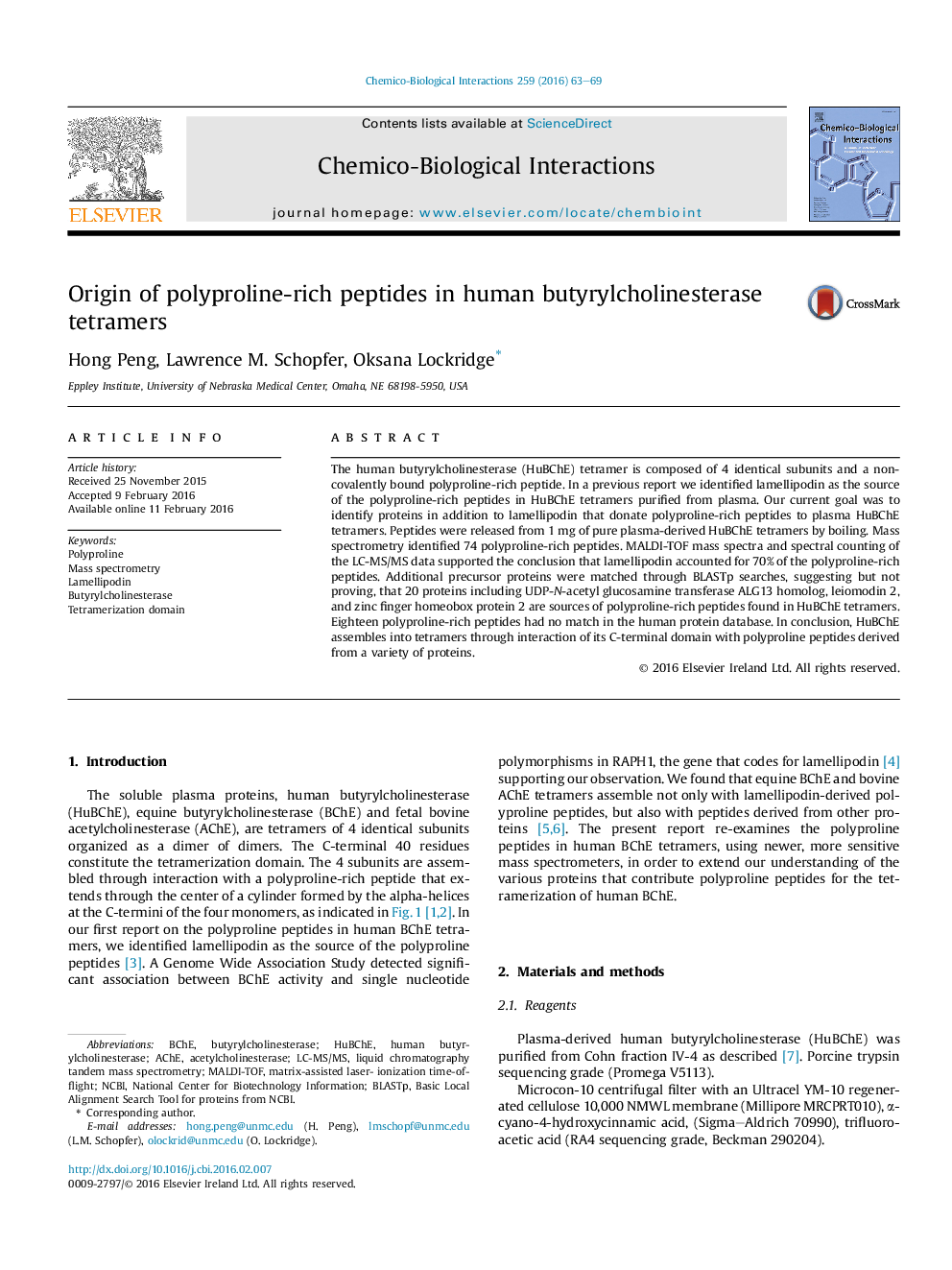| Article ID | Journal | Published Year | Pages | File Type |
|---|---|---|---|---|
| 5559504 | Chemico-Biological Interactions | 2016 | 7 Pages |
â¢Assembly of human BChE into tetramers requires polyproline peptides.â¢70% of the polyproline peptides in plasma BChE derive from lamellipodin.â¢Other precursor proteins donate 30% of the polyproline-rich peptides.
The human butyrylcholinesterase (HuBChE) tetramer is composed of 4 identical subunits and a noncovalently bound polyproline-rich peptide. In a previous report we identified lamellipodin as the source of the polyproline-rich peptides in HuBChE tetramers purified from plasma. Our current goal was to identify proteins in addition to lamellipodin that donate polyproline-rich peptides to plasma HuBChE tetramers. Peptides were released from 1Â mg of pure plasma-derived HuBChE tetramers by boiling. Mass spectrometry identified 74 polyproline-rich peptides. MALDI-TOF mass spectra and spectral counting of the LC-MS/MS data supported the conclusion that lamellipodin accounted for 70% of the polyproline-rich peptides. Additional precursor proteins were matched through BLASTp searches, suggesting but not proving, that 20 proteins including UDP-N-acetyl glucosamine transferase ALG13 homolog, leiomodin 2, and zinc finger homeobox protein 2 are sources of polyproline-rich peptides found in HuBChE tetramers. Eighteen polyproline-rich peptides had no match in the human protein database. In conclusion, HuBChE assembles into tetramers through interaction of its C-terminal domain with polyproline peptides derived from a variety of proteins.
